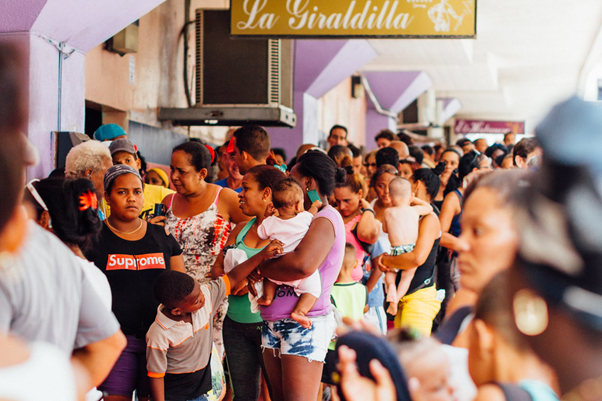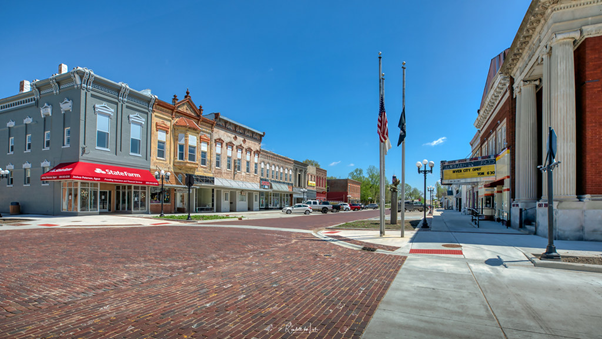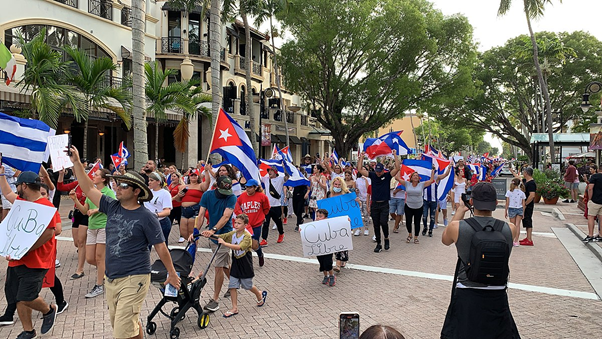Cuba is on fire. When citizens first mobilised on the streets of Havana on July 11, cries of “we are no longer afraid” echoed throughout the world. A compound of economic grievances, scarcities of food and medical supplies, pandemic mismanagement, and decades of practiced repression by Cuba’s communist government had spawned the country’s largest anti-government demonstration since the Maleconazo in 1994. Considered as the latest watershed moment in Cuba’s rich and tortuous history, these protests had underscored a deteriorating standard of living among Cuban citizens. With thousands of dissidents calling for an end to the 62-year-old regime, the government’s response has been more of the same: repress, silence, and blame the Americans.
With Raul Castro – brother of Fidel Castro – having stepped down in 2018, the communist government now faces its first threat to power without a Castro at the helm. The reigning dynasty had thus abdicated to Miguel Diaz-Canel, who, despite lacking the revolutionary credence of his predecessors, made a spine-chilling call to arms during an emergency broadcast, proclaiming that the “streets belong to the revolutionaries” whilst ordering his followers to “combat.”
Following the words of their commander-in-chief, pro-government mobs in their masses met protestors with chants of revolutionary slogans whilst exhibiting pro-government sentiments. Images on social media captured pro-government personnel and police forces attacking protestors with batons while protestors were caught throwing stones at police and toppling their cars. “Maybe there will be a need for apologies to anyone who, in the middle of all the confusion, has been mistreated,” said Diaz-Canel, who later defended and characterised the actions of his security forces as means of re-establishing peace.

Though the government may be incapable of providing basic necessities and competent governance, they remain the masters of subjugation. State workers had assembled in a show of solidarity with the communist regime, though their willingness to participate in such demonstrations remains in doubt. Internet connections were cut across cities thwarting further efforts at mobilization, while police forces went through local communities rounding up influential demonstrators in a bid to eliminate whatever momentum dissidents had gathered.
Hundreds of people, including teenagers, have been detained according to exiled rights group, Cubalex, which stressed that the figure remains in doubt as families may fear reporting arrested relatives in case of reprisals. Many detainees also have reported being mistreated or beaten by security forces according to Cuban researcher at Human Rights Watch, Juan Pappier.
A spokesperson for the Center for a Free Cuba, Janniset Rivero, estimated that more than 500 protestors are either missing or convicted to summary trials without a defense present. With state authorities confirming that government trials had begun on Tuesday, those detained may be subject to sentences of up to 20 years long. “In Cuba, there is no rule of law,” Rivero claimed, “those trials are illegal, and the families haven’t been able to see the accused.”
Cubans are raising awareness for disappearances on social media and have shared stories of detentions on a Facebook group that has amassed over 10,000 members called “Disappeared #SOSCuba.”
“We went from police station to police station looking for her,” said Cuban local Alberto Betancourt of his sister, who had found her after six days, yet was restricted by police from seeing her. Disappearances were later denied by Cuban interior ministry officials claiming that a list of detainees in circulation had been manipulated without referring to any specifics.
Cubans arrested for recording videos of peaceful protests, others arrested & convicted w/o a lawyer for making a music video, hundreds detained & whereabouts unknown. Silence from much of the world is disheartening I stand with the Cuban ppl #SOSCuba #CubaProtests #LIBERTAD https://t.co/oaJZbHSyle
— David R. DeCancio (@cancio11) July 29, 2021
Sanctions were imposed against the Cuban government by the Biden administration in response to the violent suppression of Cuban demonstrators, while a parliamentary police force and the defense minister were blacklisted. “I unequivocally condemn the mass detentions and sham trials that are unjustly sentencing to prison those who dared to speak out… the United States stands with the brave Cubans who have taken to the streets to oppose 62 years of repression,” Biden announced in a statement.
What Led To The Protests?
While an amalgamation of factors had led to the uprising, societal exhaustion from the scourge of COVID-19 lay at the heart of what happened.
Cuba had done relatively well in mitigating the societal constraints during the early phases of COVID-19. Yet, shortages and delays in vaccine distributions have seen the nation ravaged by newer variants, with health authorities reporting almost 245,000 cases — pushing vaccine clinics and hospitals to the brink of collapse — on an island with just over 11 million citizens. Lisveilis Echenique told BBC News that a lack of hospital room cost her 35-year-old brother his life, while Miguel Perez charged the government with “medical negligence” as the cause of death for his pregnant wife.
With the government’s pandemic mismanagement a focal point of frustration among protestors, dissidents have called upon the international community for humanitarian aid as the situation on the island grows critical. Hashtags for #SOSCuba have surfaced on social media while videos of incapacitated hospitals have gone viral.
Related Articles: U.S. blockade of Cuba: Condemned for the 28th time by the United Nations | The Cubans Who Taught Us About Clean Energy
The pandemic was only the latest tribulation that had devastated an economy already in ruins, which suffered a staggering 11% economic reduction over the last 12-18 months. However, Cuba’s economic woes existed long before the emergence of COVID-19.
A number of economic pledges stretching back to 2011 have remained unfulfilled, while the ongoing US embargo, recently stiffened by former US President Donald Trump, continues to stifle Cuba’s chances for economic recovery. These sanctions — in motion since the tenure of President John F Kennedy in 1962 — have clearly fallen short of achieving their initial goal.
The embargo forbade US companies from dealing with Cuba, thus gravely limiting the flow of goods to the island. The sanctions had intended to economically deprive Cuba to a point where their communist government had to either step down or undergo substantial reform. Yet with the regime having maintained its power whilst suppressing dissent with relative ease, only the unintended targets — Cuban citizens — have suffered from America’s diplomatic negligence.
While normally amassing up to 10% of the nation’s GDP, tourism has dramatically atrophied over the past year. Just over a million tourists have visited Cuba in the last 12 months — a mere fraction of the number of visitors in 2019 — depriving local economies of the foreign currency that it heavily relies upon.
Alejandro, who was used to making $30 an hour driving tourists to Cuban sights in his classic Chevy, is just one of many Cubans suffering this economic shock. “There’s no tourists, no income. We didn’t think it would last this long,” he said.
These contributing factors have all but depleted Cuba’s sources of revenue, hindering the nation from importing its products, leading to an existential food crisis unseen since the fall of the Soviet Union.

Trump’s administration had imposed sanctions on tanker companies that delivered petroleum to Cuba from Venezuela as well as limiting commercial flights between the US and Cuba. This, coupled with a potential 40% bounce in international meal costs over the next 12 months, has further deprived a country that imports up to 70% of its food of the means to provide its citizens with household necessities.
Subsequent queues outside of local stores, going back several blocks, have become a common sight for citizens during the pandemic. Pharmacies and hospitals are short on basic medicines, while the lack of wheat flour has led to the production and sale of pumpkin-based bread in many Cuban districts. Cuba’s inefficient state-controlled farming sector has never produced enough to feed a population of 11 million, though now it is heavily relied upon by the cash-strapped administration.
[Cuba is facing] the triple threat of Trump, Venezuela and then Covid.
— Ted A. Henken, a professor at Baruch College.
Cubans have resorted to transporting “mules” of essentials to relieve shortages through sparse flights to Florida and Latin America. Through a somewhat tacit recognition of the importance of these mules, last week the government lifted limits on duty-free personal imports of food, medicine, and toiletries.
“There is no food, there is no money, there is no work, there is nothing. We are tired of seeing how the government lies on television,” Havana local Carmen, told The Financial Times.

Though the fact remains that the pandemic has largely contributed to Cuba’s current footing, the government has been the biggest cause of the nation’s economic demise. In 2011, Raul Castro announced several unprecedented reforms that introduced more market-oriented policies. While eliminating aspects of the government’s infamous bureaucracy, these reforms also incentivised investment and entrepreneurship. Yet in 2021, these pledges have remained largely a dead letter.
[Failure of enacting such reforms are due to a] combination of inertia, lethargy, vested interests, self-interest and cowardice.
— Richard Feinberg, professor at the University of California San Diego.
And while Diaz-Canel has perpetually placed blame on the American government and its embargo as the sole impediment on the Cuban economy, earlier this year the President introduced a number of economic policies that, while increasing wages, threatened to cause an unprecedented rise in inflation of between 500% to 900%. Considering the nation’s current liquidity crisis, economists have slammed the timing of such policies. “They’re undertaking reforms at the worst possible moment; they have no money,” Feinberg said.
“Dollar stores” were reopened last year by the government allowing Cubans to purchase goods in foreign currency. A scheme, part of the government’s greater plan of unifying its dual currency, saw the Cuban peso – the currency most Cubans are paid wages in – devalued. Adding insult to injury, a key element of Diaz-Canel’s reforms included limiting the exchange between the Cuban peso and the dollar. Considering that Cubans receive a majority of remittances in dollars, economists have charged Diaz-Canel’s move as the most aggressive constraint upon the US currency since the tenure of the late Fidel Castro.
President Miguel-Canel has since conceded some validity to the expressed grievances of dissidents, with analysts agreeing that the government may speed up the economic reforms espoused by former President Raul Castro. Yet with the situation in Cuba as precarious as ever, it remains uncertain whether this would be enough to quell the dissent among many Cuban citizens.
While it seems unlikely that the 62-year-old communist establishment will buckle under this pressure, it is incumbent upon them to take the dissent of Cubans seriously, and act with intent; it is also paramount for President Biden to honour the pledges made in his presidential campaign by reversing the inflammatory policies Trump had enacted to revive Cuban-U.S. diplomacy. While Cuba’s future remains up in the air, one thing for certain is that change, for better or worse, is now inevitable.
Editor’s Note: The opinions expressed here by Impakter.com columnists are their own, not those of Impakter.com. — In the Featured Photo: Protests erupt in Cuba on July 11. Featured Photo Credit: WIKIMEDIA COMMONS.










